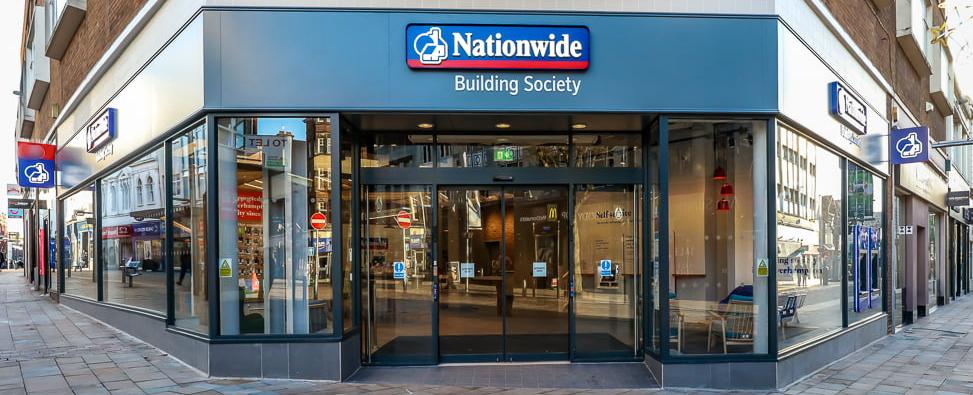
Nationwide Building Society — The Complete 2025 Report
Understanding the UK’s Largest Mutual Financial Institution
Table of Contents
- Introduction
- Origins and History
- The Concept of a Building Society
- Nationwide’s Founding and Evolution
- Governance and Mutual Model
- Financial Performance 2024–2025
- Business Segments Overview
- Nationwide’s Digital Transformation
- Customer-Centric Values
- Leadership and Governance
- The Virgin Money Acquisition
- Products and Services
- Nationwide and the Housing Market
- Interest Rate Environment
- Risk Management and Capital Strength
- Social Responsibility and ESG Commitments
- Challenges and Strategic Opportunities
- Comparison with UK Banks
- Technological Future and AI Integration
- Nationwide’s Role in the UK Economy
- The Future of Mutuality
- Conclusion and Insights
1. Introduction
Nationwide Building Society is one of the most recognized and trusted names in the British financial sector. Founded on mutual principles, it stands as the world’s largest building society and the second-largest mortgage lender in the United Kingdom.
As of 2025, Nationwide serves more than 17 million members, offering services across mortgages, savings, current accounts, and insurance. Its difference lies not in size alone, but in ownership — every member is also a shareholder in principle. Unlike major banks such as HSBC, Lloyds, or NatWest, Nationwide has no external shareholders demanding dividends. Profits are instead reinvested for the benefit of members, embodying the mutual model that defines its identity.
2. Origins and History
Nationwide’s history dates back to 1846, when small regional societies were formed to help working-class people buy homes through pooled savings. These early groups — mutual societies — merged over time, culminating in the creation of the modern Nationwide Building Society in 1884.
Throughout the 20th century, Nationwide absorbed numerous local societies. Notable mergers included:
- Anglia Building Society (1987)
- Portman Building Society (2007)
These consolidations created a single institution large enough to compete with high-street banks while retaining the cooperative DNA that built its reputation.
3. The Concept of a Building Society
A building society is a financial cooperative owned by its members — savers and borrowers. The model was designed to help ordinary people access affordable credit to buy homes.
Unlike commercial banks:
- Building societies cannot issue equity shares.
- Their profits are returned to members in the form of better rates or reinvested in community programs.
- They operate under a “one member, one vote” principle.
Nationwide remains the archetype of this philosophy in the UK, proving that member ownership and financial stability can coexist.
4. Nationwide’s Founding and Evolution
The modern Nationwide Building Society emerged from the merger between the Nationwide and Anglia Building Societies in 1987. Subsequent acquisitions, including the Portman Building Society in 2007, expanded its national reach.
Through consistent growth, Nationwide avoided the 2008 financial crisis’ worst effects due to prudent lending and conservative risk management. While many banks required taxpayer bailouts, Nationwide remained stable and profitable.
5. Governance and Mutual Model
Nationwide’s governance structure reflects its mutuality:
- Members: Every depositor or borrower has a vote.
- Board of Directors: Elected by members during annual general meetings (AGMs).
- CEO and Executive Team: Responsible for strategic direction, compliance, and profitability.
This model ensures that strategic decisions align with long-term member benefit rather than short-term market returns.
6. Financial Performance 2024–2025
In fiscal year 2025, Nationwide Building Society reported robust financial results:
| Financial Indicator | 2025 Result | Change (YoY) |
|---|---|---|
| Total Assets | £370 billion | +4.5% |
| Mortgage Balances | £225 billion | +3.2% |
| Profit Before Tax | £2.3 billion | -5% (vs 2024) |
| Member Deposits | £225 billion | +6% |
| CET1 Capital Ratio | 24% | Stable |
| Members Served | 17 million+ | +0.8% |
Despite economic pressures from inflation and high interest rates, Nationwide’s underlying financial strength remains solid, underscoring its conservative risk approach.
7. Business Segments Overview
Nationwide operates across four key business divisions:
Retail Mortgages
Primary driver of income, offering first-time buyer loans, remortgages, and buy-to-let products.Retail Savings
Offers a wide range of savings accounts, ISAs, and fixed-rate bonds.Current Accounts & Payments
Competes with major banks through its FlexAccount, FlexDirect, and digital payment solutions.Insurance and Financial Planning
Provides home, life, and travel insurance through partnerships.
8. Nationwide’s Digital Transformation
Nationwide’s ambition to be a digital mutual drives heavy investment in technology — over £4 billion since 2017.
Key Digital Innovations:
- Cloud-based core banking systems
- API integrations for Open Banking
- AI-powered fraud detection and credit scoring
- Mobile app with real-time alerts and budgeting tools
- Digital mortgage application process
With over 6 million active app users, Nationwide continues to combine technological innovation with mutual ethics.
9. Customer-Centric Values
Nationwide’s motto — “Building society, nationwide” — reflects a customer-first philosophy.
Values in Action:
- Fair Fees: Transparent pricing and minimal hidden charges.
- Financial Inclusion: Accessibility for underserved communities.
- Member Rewards: Dividends through the Fairer Share Payment initiative.
- Community Grants: Over £25 million distributed since 2017.
10. Leadership and Governance
As of 2025:
- Chief Executive Officer: Debbie Crosbie (appointed 2022)
- Chairman: Kevin Parry OBE
Under Crosbie’s leadership, Nationwide expanded its digital infrastructure and completed its largest merger in decades — the acquisition of Virgin Money UK.
11. The Virgin Money Acquisition
In 2024, Nationwide announced its £2.9 billion acquisition of Virgin Money UK, marking the biggest takeover by a building society in history.
Strategic Rationale:
- Expands customer base to nearly 20 million.
- Enhances SME banking and mortgage portfolios.
- Achieves greater economies of scale.
Virgin Money now operates as a subsidiary brand, gradually aligning under Nationwide’s mutual governance principles.
12. Products and Services
Nationwide offers a full suite of retail financial products:
| Category | Examples |
|---|---|
| Savings | ISAs, Fixed Bonds, Flex Regular Saver |
| Mortgages | First-time Buyer, Remortgage, Buy-to-Let |
| Current Accounts | FlexAccount, FlexDirect, FlexPlus |
| Loans | Personal and Vehicle Loans |
| Credit Cards | Balance Transfer, Low-Interest Options |
| Insurance | Home, Life, Travel, and Car |
| Business Banking | SME loans (via Virgin Money division) |
13. Nationwide and the Housing Market
Nationwide’s influence on UK housing extends beyond mortgages. Its Nationwide House Price Index (HPI), published monthly, is one of the UK’s most reliable indicators of property trends.
As of late 2025:
- Average UK house price: £263,000
- Annual change: +1.2%
- Market conditions: Stabilising after 2023–2024 rate hikes
14. Interest Rate Environment
The Bank of England base rate heavily impacts Nationwide’s lending and saving rates. With the rate at 5.25% in 2025, mortgage affordability remains a national concern.
Nationwide has introduced Green Mortgages offering rate discounts for energy-efficient homes, aligning lending with sustainability goals.
15. Risk Management and Capital Strength
Nationwide’s prudence remains its hallmark.
Core Risk Policies:
- Conservative loan-to-value (LTV) ratios
- Diversified funding base through retail deposits
- Strong liquidity reserves exceeding regulatory minima
- CET1 capital ratio of 24%, among the highest in Europe
Such financial discipline protects members against market volatility.
16. Social Responsibility and ESG Commitments
Nationwide’s Purpose Framework integrates environmental and social goals into operations.
ESG Highlights:
- £10 billion green lending target by 2030
- Net-zero operational emissions by 2045
- £25 million in community housing grants
- 50% women in senior management roles
The Society’s ESG strategy aligns with UN Sustainable Development Goals, particularly Sustainable Cities (Goal 11) and Responsible Consumption (Goal 12).
17. Challenges and Strategic Opportunities
Current Challenges:
- High inflation affecting savings rates
- Increased competition from digital-only banks
- Regulatory compliance costs
- Cybersecurity threats
Opportunities:
- Leveraging Virgin Money’s SME expertise
- Expanding into digital-first mortgage processing
- Deepening member engagement through AI and analytics
18. Comparison with UK Banks
| Institution | Ownership | Customer Satisfaction | Assets (£bn) | Profit 2025 (£bn) |
|---|---|---|---|---|
| Nationwide | Mutual | 84% | 370 | 2.3 |
| Lloyds | Shareholder | 74% | 890 | 7.2 |
| NatWest | Shareholder | 70% | 800 | 6.9 |
| HSBC UK | Shareholder | 68% | 850 | 5.8 |
| Santander UK | Shareholder | 71% | 320 | 1.5 |
Nationwide’s trust and satisfaction scores consistently outshine its larger, shareholder-owned rivals.
19. Technological Future and AI Integration
Nationwide’s “Future Ready” transformation includes:
- Blockchain-secured AGM voting
- AI credit modelling to enhance fairness
- Cloud-native data systems
- RPA automation for faster service delivery
These innovations mark Nationwide’s evolution into a true digital mutual — combining high-tech capability with ethical grounding.
20. Nationwide’s Role in the UK Economy
Nationwide contributes significantly to national stability:
- Major lender to first-time buyers and key workers
- Employer of over 18,000 people
- Key stakeholder in housing policy debates
Its decisions often set mortgage standards that ripple through the wider financial system.
21. The Future of Mutuality
The global resurgence of cooperative finance, from Rabobank in the Netherlands to Desjardins in Canada, shows that mutual banking can scale sustainably.
Nationwide’s continued success suggests that member ownership is not a historical relic but a viable alternative to profit-driven banking models.
Strategic Vision to 2030:
- Digitally transform all services.
- Grow green lending by £10 billion.
- Lead ethical AI use in financial services.
- Expand financial inclusion programs.
- Remain the UK’s most trusted financial brand.
22. Conclusion and Insights
Nationwide Building Society stands as a model of financial ethics, stability, and innovation. While global banking has often prioritized shareholders, Nationwide proves that prosperity and fairness can coexist through mutuality.
Its resilience during economic crises, commitment to technology, and unwavering member focus position it as the blueprint for responsible, people-driven finance in the 21st century.
In a world that demands trust, Nationwide continues to build it — society by society, member by member.
Share
Related Posts

![HMRC and the UK State Pension Tax [Everything You Need to Know]](/static/2da552f3d27fbf43d2175b17c15d239d/144fe/hmrc.jpg)
Quick Links



![Types of Bonds in the United Kingdom [A Comprehensive Guide Covering England, Wales, Scotland, and Northern Ireland ]](/static/786e60f27f5a174ee0b4295e559b0e01/144fe/im.jpg)
